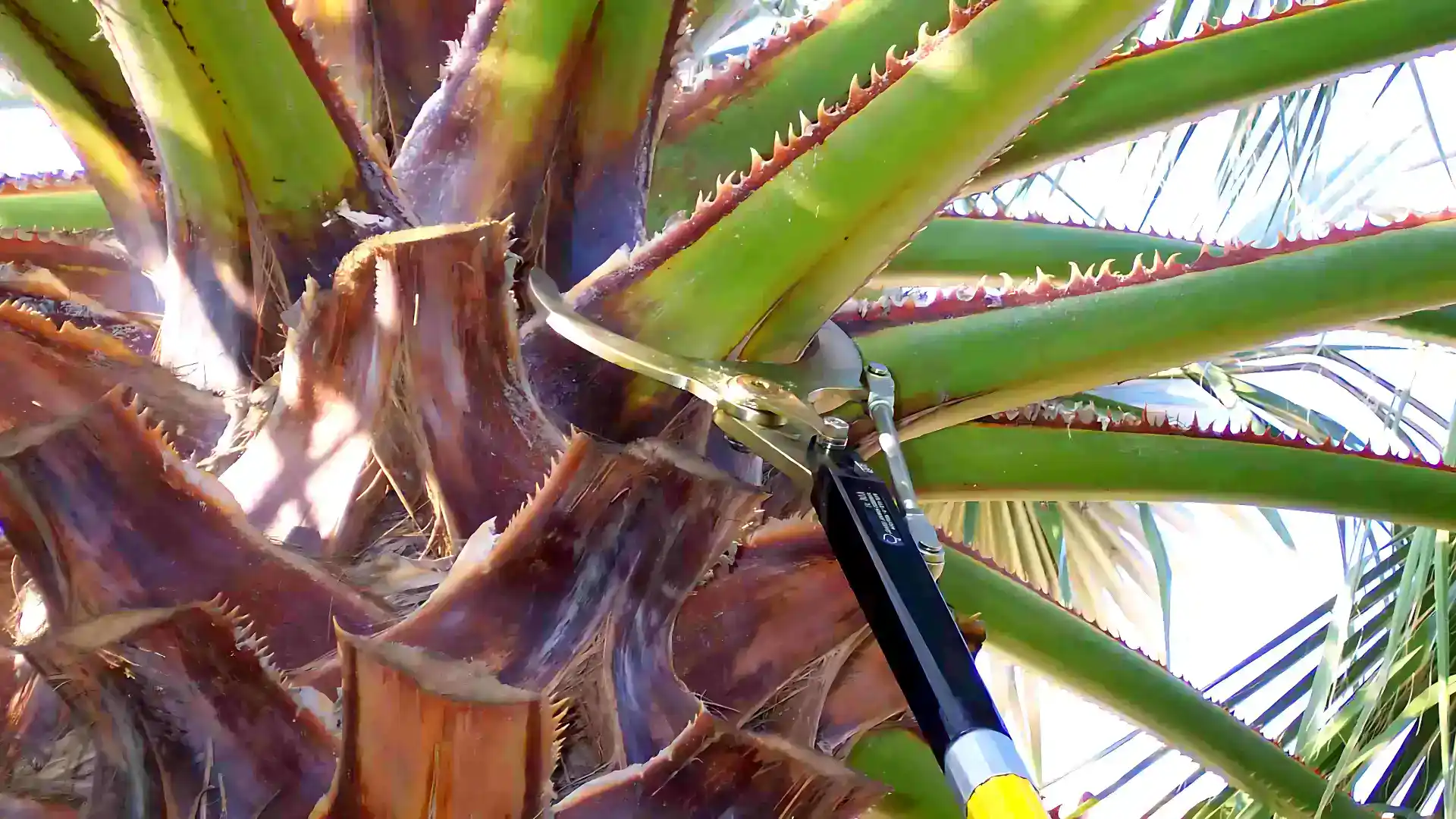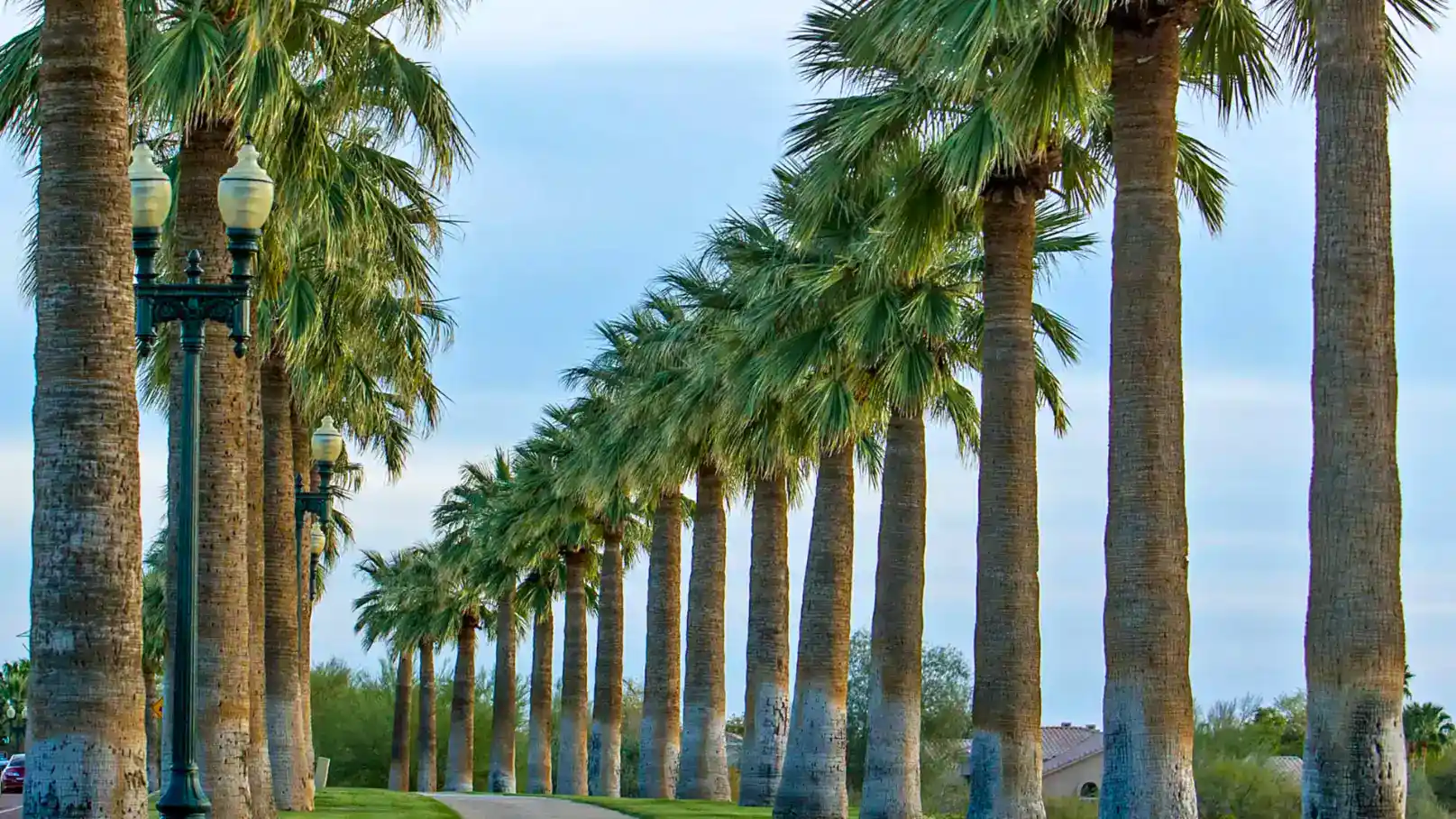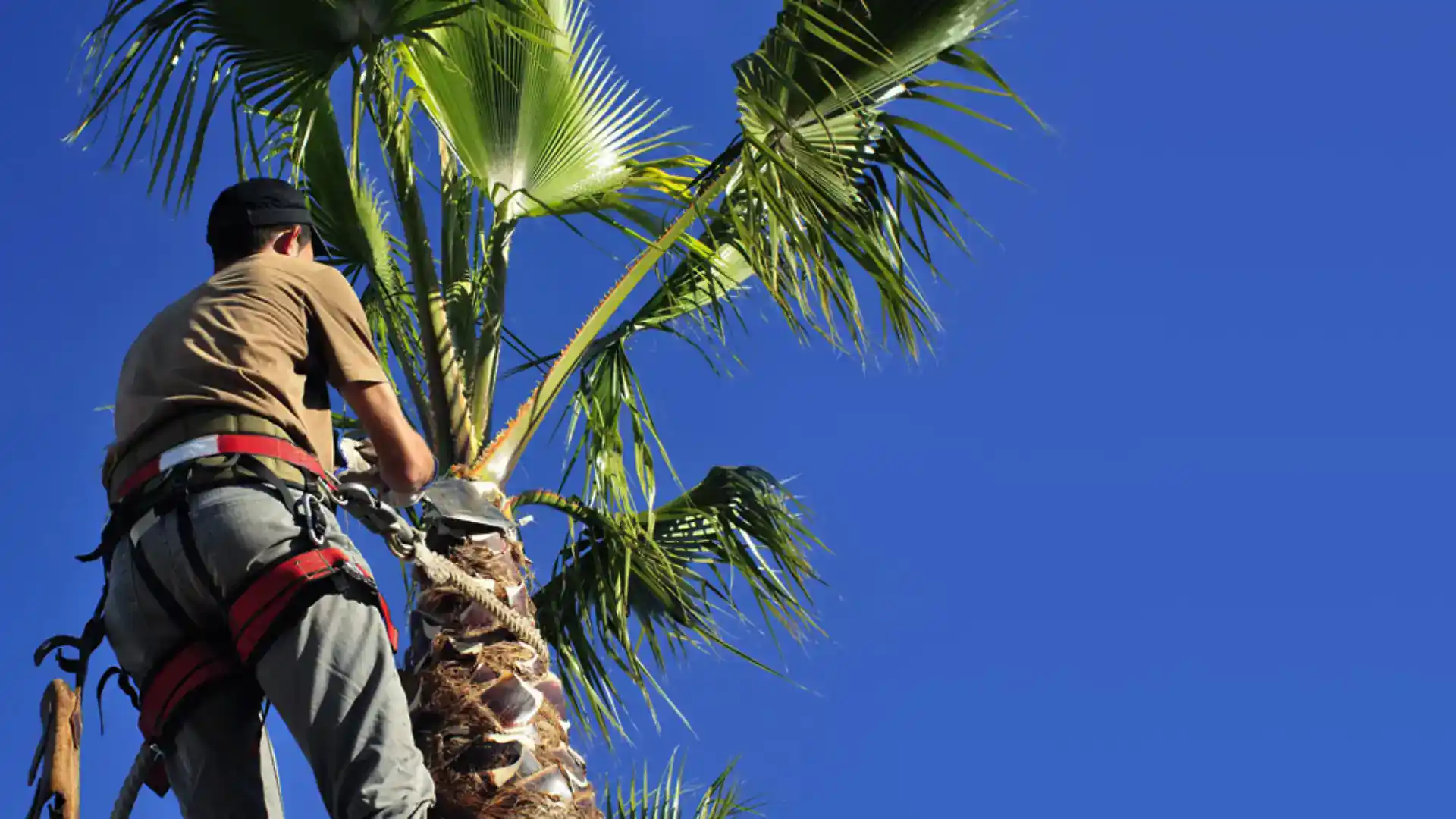Palm trees are iconic in Mesa, Arizona, where the desert climate creates unique challenges for landscaping. Unlike more temperate regions, Mesa experiences intense sun, dry air, and extreme summer heat. These factors not only influence how palms grow but also how often they need to be trimmed. Understanding the connection between desert heat and palm tree trimming helps homeowners keep their trees healthy, safe, and looking their best.
The Impact of Desert Heat on Palm Growth
Palms thrive in warm climates, but desert heat pushes them to grow differently than palms in coastal or humid areas. Mesa’s scorching summers accelerate frond drying, which means dead fronds accumulate faster. While palms continue producing new fronds, older ones die more quickly in the desert’s dry environment.
This cycle leads to:
- Faster buildup of dead or brown fronds.
- Increased risk of fire hazards from dry frond skirts.
- A greater likelihood of pests nesting in dried material.
As a result, palms in Mesa may need trimming more frequently than those in mild climates.
Why More Frequent Trimming Matters in Mesa
- Fire Prevention
Dead fronds are extremely flammable. In Arizona’s hot summers, they dry out to the point where a spark from fireworks, a grill, or even lightning can ignite them. Regular trimming reduces these risks. - Pest Control
Dry fronds create perfect hiding places for pests like scorpions, roaches, and rodents. Trimming eliminates these habitats and protects your home. - Safety During High Winds and Dust Storms
Mesa often experiences strong winds and dust storms. Untouched palms can drop heavy fronds, creating dangerous projectiles that may damage property. Frequent trimming ensures only healthy fronds remain during these events. - Tree Health
Removing only dead fronds allows the palm to direct energy to healthy growth. In desert conditions, where resources are scarce, this is critical.
How Often Should You Trim Palms in Mesa?
In humid regions, palms might only need trimming once a year. But in Mesa, the heat accelerates frond drying and debris buildup. Homeowners should plan for two trimmings per year:
- Late Spring/Early Summer: To clear out winter damage, dead fronds, and prepare for the hottest months.
- Fall: To remove seed pods, fruit, and fronds dried out from the summer heat.
Some properties with large or fast-growing palm species may even require more frequent trimming.
Signs Your Palm Needs Extra Trimming in Desert Heat
- A visible “skirt” of dead, hanging fronds.
- Fronds turning brown faster than usual.
- Seed pods or fruit clusters weighing down branches.
- Insects or rodents nesting in the crown or trunk.
- Fronds falling on their own due to brittleness.
If you notice these signs, it’s best to schedule trimming before the problem worsens.
Why DIY Trimming in Mesa Can Be Risky
Desert heat not only affects trees but also trimming conditions. Working outdoors in 100+ degree weather while handling sharp tools or climbing ladders is dangerous. Dead fronds are heavier than they appear, and falls or heat exhaustion are real risks.
Professional palm trimmers in Mesa, like Fronds Palm Trimmers, are equipped with the right tools, protective gear, and knowledge to work safely even in challenging desert conditions.
Additional Care Tips for Desert Palms
- Deep Watering
Palms in Mesa benefit from deep, infrequent watering to strengthen root systems. Shallow watering leaves them stressed in the heat. - Fertilization
Desert soils often lack nutrients. Use a palm-specific fertilizer with magnesium, potassium, and manganese to keep fronds strong and green. - Avoid Over-Trimming
While frequent trimming is necessary, cutting too many green fronds weakens the tree. Professionals know the balance between safety and tree health. - Pest Monitoring
Inspect your palms regularly, especially during summer, for signs of scale, aphids, or borers. Healthy trimming practices reduce infestations.
The Role of Professionals in Desert Palm Care
In Mesa, palm trimming is more than maintenance—it’s safety, pest control, and fire prevention. At Fronds Palm Trimmers, we:
- Trim palms with precision to remove only what’s necessary.
- Clean up debris fully so no fire or pest risks remain.
- Schedule trimming at the right times for desert conditions.
- Provide removal services when palms are beyond recovery.
Our goal is to keep your palms thriving despite the challenges of Arizona’s desert heat.
Conclusion
Mesa’s desert climate changes how often palm trees need trimming. With intense heat speeding up frond drying, homeowners should plan on trimming at least twice per year to keep trees healthy, reduce fire hazards, and prepare for high wind events. While DIY trimming may seem tempting, the risks of desert heat and tall palms make professional service the safest choice.
By partnering with Fronds Palm Trimmers, Mesa residents can enjoy the beauty of palm trees without the stress of constant upkeep. Proper trimming keeps your palms resilient against heat, wind, and pests—ensuring they remain an asset to your landscape for years to come.



